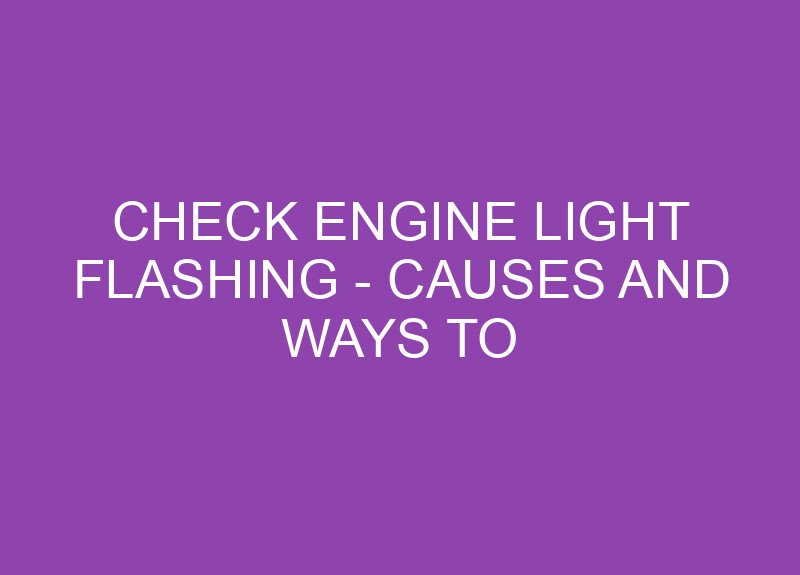The enigmatic EPC light can be a cause of concern for any driver. When illuminated on the dashboard, it is indicative of underlying issues that demand immediate attention. Failure to address these problems promptly can lead to potentially hazardous driving conditions and costly repairs. In this informative blog post, we will explore some of the common causes of the EPC light coming on in vehicles and provide you with helpful troubleshooting tips to get you back on the road safely. If you would like more detailed instructions on how to fix the EPC light on a VW, you can visit How to Fix the EPC Light on a VW.
Key Takeaways:
- EPC light is an important indicator on your vehicle’s dashboard that shouldn’t be ignored.
- The most common cause of the EPC light turning on is a problem with the throttle body or accelerator pedal.
- Other potential causes of the EPC light include issues with the brake system, engine sensors, or ignition system.
- Troubleshooting tips for the EPC light include checking for loose or damaged connections, cleaning the throttle body, and resetting the electronic control unit.
- If the EPC light remains on or keeps coming back, it is recommended to have a professional diagnostic performed to identify and address the underlying issue.
Common Causes of EPC Light
Any vehicle owner who has encountered the dreaded EPC (Electronic Power Control) light knows the sinking feeling that accompanies it. This warning light, prominently displayed on the dashboard, indicates a potential issue with the vehicle’s electronic throttle control system. While the EPC light can be triggered by a variety of problems, there are a few common causes that vehicle owners should be aware of. Understanding these causes can help you troubleshoot the issue more effectively or enable you to communicate the problem to a mechanic more clearly.
Faulty Throttle Body
A common culprit behind the EPC light is a faulty throttle body. The throttle body regulates the airflow into the engine, controlling the vehicle’s acceleration. When the throttle body malfunctions, it can disrupt this airflow and lead to a variety of issues, including triggering the EPC light. Symptoms of a faulty throttle body may include unresponsive throttle, sudden loss of power, or engine misfires. If the EPC light is accompanied by these symptoms, it is recommended to have the throttle body inspected and potentially replaced by a qualified mechanic.
Malfunctioning Sensor
Another possible cause of the EPC light is a malfunctioning sensor within the vehicle’s electronic control system. The sensors in a vehicle play a crucial role in gathering information to regulate various systems. If one of these sensors fails or provides inaccurate readings, it can trigger the EPC light. This may include sensors responsible for monitoring the throttle position, vehicle speed, or even engine temperature. Vehicle owners may experience issues such as poor fuel efficiency, erratic acceleration, or difficulty starting the engine. Expert diagnosis and inspection are recommended to identify and replace the malfunctioning sensor.
Electrical Issues
Electrical issues can also lead to the illumination of the EPC light. Wiring problems or faulty connections within the electronic control module can disrupt the communication between various components, triggering the EPC light as a result. Symptoms of electrical issues may include sporadic EPC light activation, intermittent loss of power, or other malfunctions in the vehicle’s electronic systems. To address these issues, a thorough inspection of the electrical system should be carried out by a professional technician. Repairing or replacing damaged wiring or connections may be necessary to resolve the EPC light concern.
Troubleshooting Tips for EPC Light
Now that you are aware of common causes of the EPC (Engine Power Control) light, it is crucial to know how to troubleshoot this issue. This section will provide you with some helpful tips to diagnose and resolve problems related to the EPC light. By following these steps, you can save time and money by potentially identifying and fixing the issue on your own.
Check for Loose Connections
When encountering the EPC light, the first step a vehicle owner should take is to check for any loose connections. Loose connections can prevent various sensors and components from functioning properly, triggering the EPC light. To do this, inspect the electrical connections and wiring harnesses associated with the engine control module, throttle body, and other related components. Look for signs of corrosion, frayed wires, or loose connectors. Be sure to correct any loose connections or replace damaged wiring if necessary. Keep in mind that ignoring loose connections can lead to more severe issues, such as engine misfires or stalling. Thus, it is essential to address this problem promptly.
Clean or Replace the Throttle Body
The throttle body plays a critical role in regulating the airflow to the engine. A dirty or malfunctioning throttle body can trigger the EPC light. To troubleshoot this problem, one can clean the throttle body using a specialized cleaner and a soft brush. Ensure that the throttle body is thoroughly cleaned and any buildup of dust, carbon, or dirt is removed. In some cases, the throttle body might need to be replaced if cleaning does not solve the issue. It is recommended to consult a professional technician for guidance on throttle body cleaning or replacement to prevent any further damage to the vehicle.
Scan for Error Codes
Another useful troubleshooting tip is to scan the vehicle for error codes using a diagnostic scanner. This tool allows you to retrieve specific error codes related to the EPC light and identify the underlying issue. The error codes will provide valuable information about the malfunctioning component or system, helping you pinpoint the problem more accurately. Regularly scanning for error codes will help you stay on top of any potential issues with your vehicle’s performance and prevent further complications. If you are unsure how to use a diagnostic scanner, it is advised to seek assistance from a knowledgeable mechanic.
Inspect the Wiring Harness
The wiring harness is responsible for providing electrical connections throughout the vehicle’s systems. Over time, the wiring harness can become damaged or worn, leading to electrical malfunctions and triggering the EPC light. It is crucial to inspect the entire wiring harness thoroughly, paying close attention to any visible signs of damage, such as exposed wires or melted insulation. Addressing damaged wiring harnesses is essential to prevent potentially dangerous situations, including electrical fires or system failures. If any issues are detected, it is recommended to consult a professional mechanic for repairs or replacements.
In summary, troubleshooting the EPC light involves checking for loose connections, cleaning or replacing the throttle body, scanning for error codes, and inspecting the wiring harness. By following these steps, one can effectively diagnose and resolve issues related to the EPC light. Remember, timely action is crucial in addressing these problems to prevent further damage to your vehicle.
Prevention and Maintenance
Despite their varying causes, EPC lights can often be prevented through regular maintenance and preventative measures. By staying on top of vehicle inspections, keeping the air intake system clean, and ensuring the electrical system is in good condition, drivers can minimize the risk of encountering an EPC light issue.
Regular Vehicle Inspections
To prevent EPC light issues, regular vehicle inspections are crucial. A thorough inspection should be performed at least once a year or every 12,000 miles, whichever comes first. During these inspections, a certified mechanic will examine the engine, transmission, and other vital components to identify any potential issues that could trigger an EPC light. They will also check for any stored error codes in the vehicle’s computer system that may serve as early warning signs of problems.
Clean Air Intake System
A clean air intake system plays a significant role in preventing EPC light issues. The air intake system is responsible for supplying the engine with clean and oxygen-rich air for combustion. Over time, dirt, debris, and contaminants can accumulate and restrict airflow, leading to poor engine performance and trigger an EPC light. Regularly inspecting and cleaning the air filter, as well as the intake manifold and throttle body, ensures unrestricted airflow and reduces the risk of EPC light activation.
Keep the Electrical System in Good Condition
The electrical system is a critical component of any vehicle and can greatly impact the activation of the EPC light. To prevent EPC light issues, it is crucial to keep the electrical system in good condition. This includes regularly checking and maintaining the battery’s charge and connections, ensuring proper functioning of alternators and voltage regulators, and inspecting wiring harnesses for any signs of wear or damage. Additionally, periodically scanning the vehicle’s electrical system with a diagnostic tool can help identify and rectify any potential issues before they trigger an EPC light.

Conclusion
So, understanding the common causes and troubleshooting tips for the EPC light in a vehicle can be immensely helpful for car owners. By familiarizing themselves with potential issues such as a faulty throttle body, loose wiring, or a malfunctioning sensor, they can take the necessary steps to resolve the problem efficiently. Whether it’s seeking professional assistance or trying out DIY solutions like checking for loose connections or replacing a damaged part, car owners can ensure their vehicles run smoothly and avoid potential dangers on the road. With this knowledge and authority, they can confidently tackle EPC light issues and maintain the performance and safety of their vehicles.
FAQ
Q: What is the EPC light in my vehicle and what does it indicate?
A: The EPC (Electronic Power Control) light in your vehicle is a warning indicator that signifies a problem with the engine’s electronic throttle control system. When illuminated, it usually indicates a fault that needs attention. It is essential not to ignore this warning as it may affect your vehicle’s performance and safety.
Q: What are some common causes for the EPC light to come on?
A: Several factors can trigger the EPC light to illuminate. The most common causes include a malfunctioning throttle body, faulty accelerator pedal position sensor, intake air control valve issues, wiring problems, or a malfunction in the engine control unit (ECU). It’s recommended to have the vehicle diagnosed by a qualified technician to determine the exact cause.
Q: Can I continue driving my vehicle when the EPC light is on?
A: It is generally not advisable to continue driving your vehicle when the EPC light is illuminated. The light indicates that there is a problem with the engine’s electronic throttle control system, which can compromise your vehicle’s performance and safety. It’s recommended to pull over safely, turn off the engine, and consult a professional to diagnose and resolve the issue.
Q: How can I troubleshoot the EPC light issue on my own?
A: While it’s best to consult a professional for an accurate diagnosis, you can perform a few preliminary checks. First, ensure that all electrical connections related to the throttle control system are secure. Check the throttle body for any signs of dirt or debris and clean it if necessary. Inspect the accelerator pedal and its wiring for any damage. If these basic checks don’t resolve the issue, it’s crucial to seek professional assistance.
Q: How much does it typically cost to repair the EPC light issue?
A: The cost of repairing the EPC light issue can vary depending on the specific cause and the make and model of your vehicle. In some cases, a simple fix like cleaning the throttle body or replacing a sensor might be sufficient and relatively inexpensive. However, if there is a major malfunction requiring the replacement of components or electronic repairs, the cost may be higher. It is recommended to consult a professional technician who can provide an accurate diagnosis and estimate for the repair.










